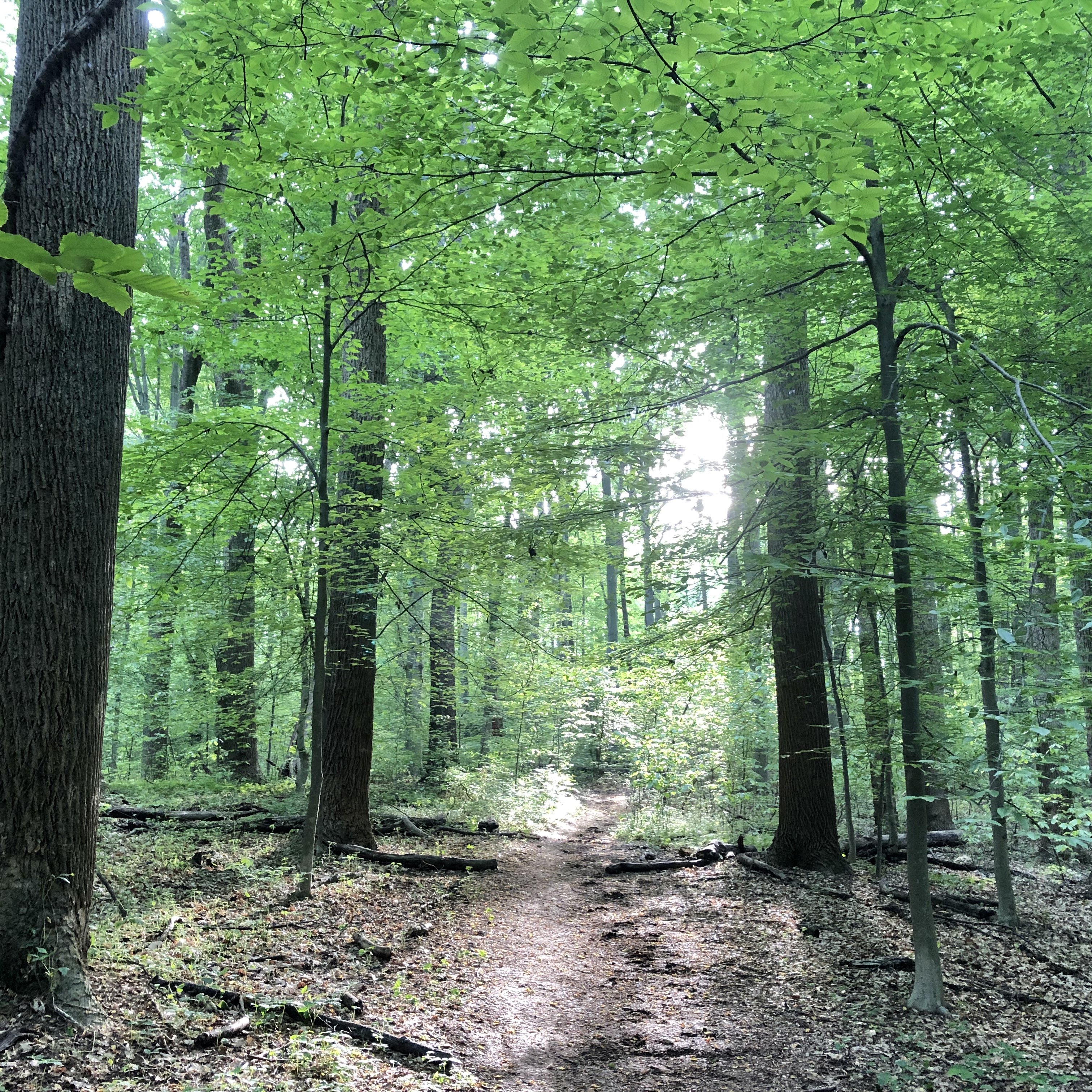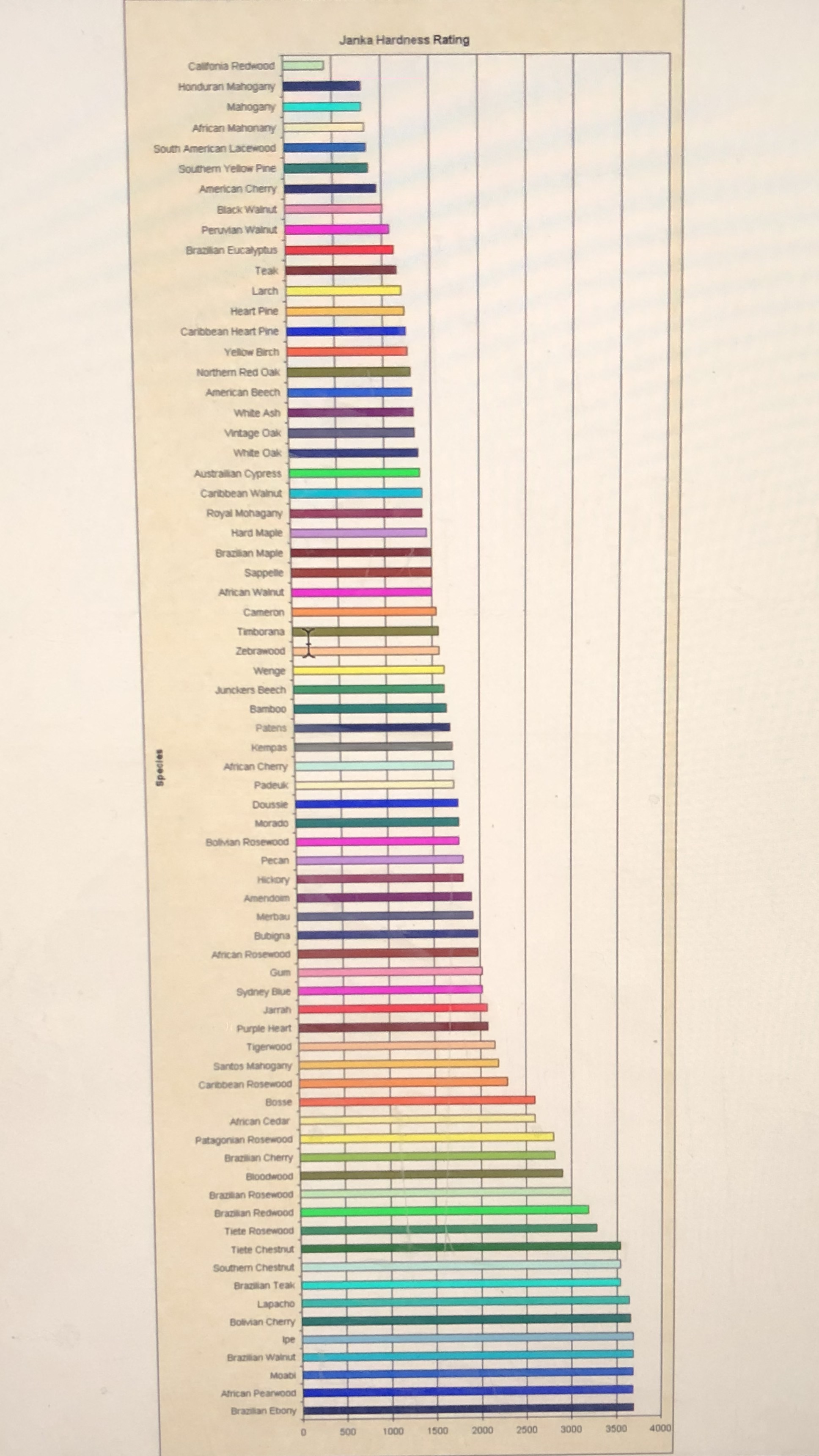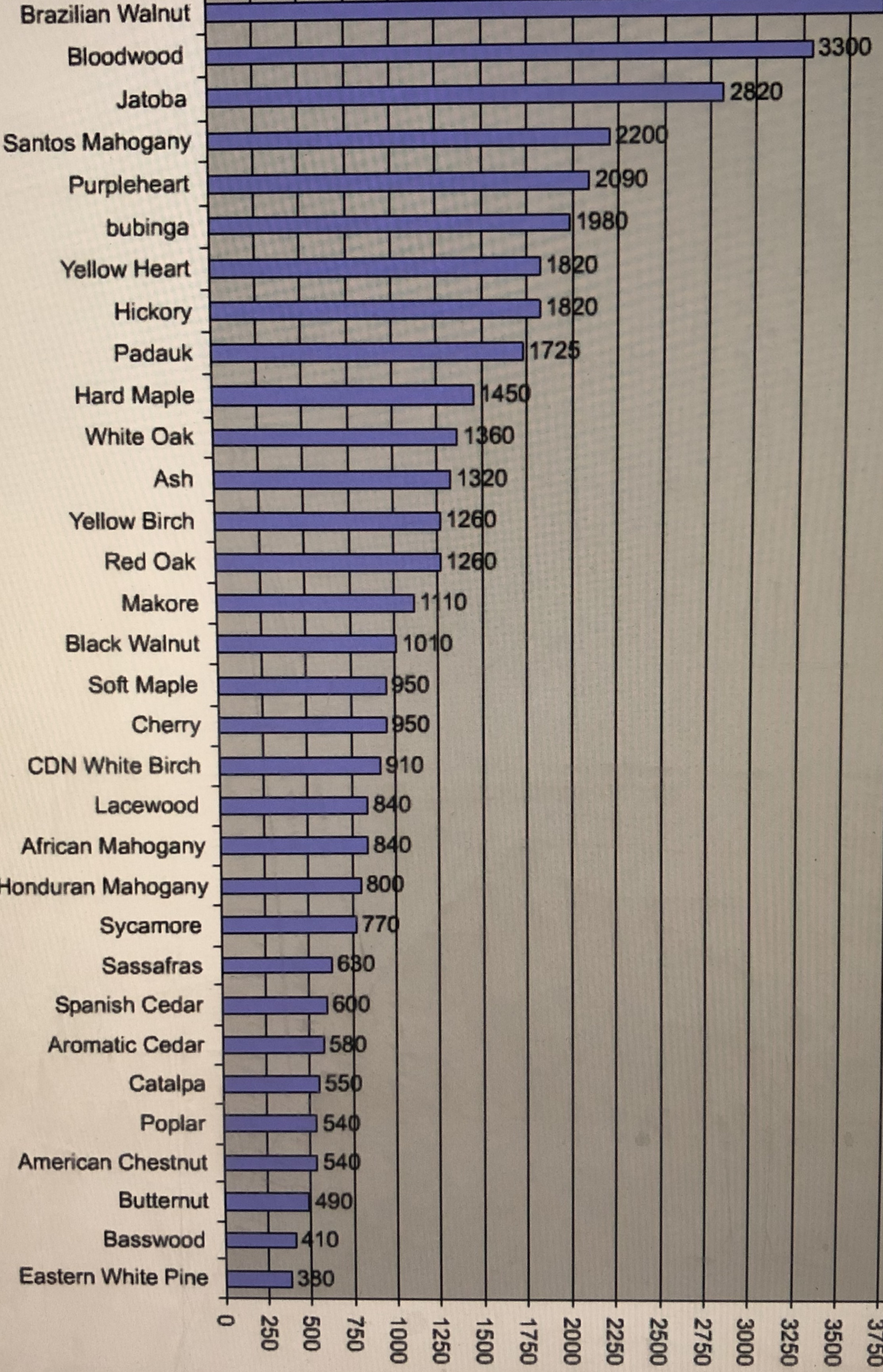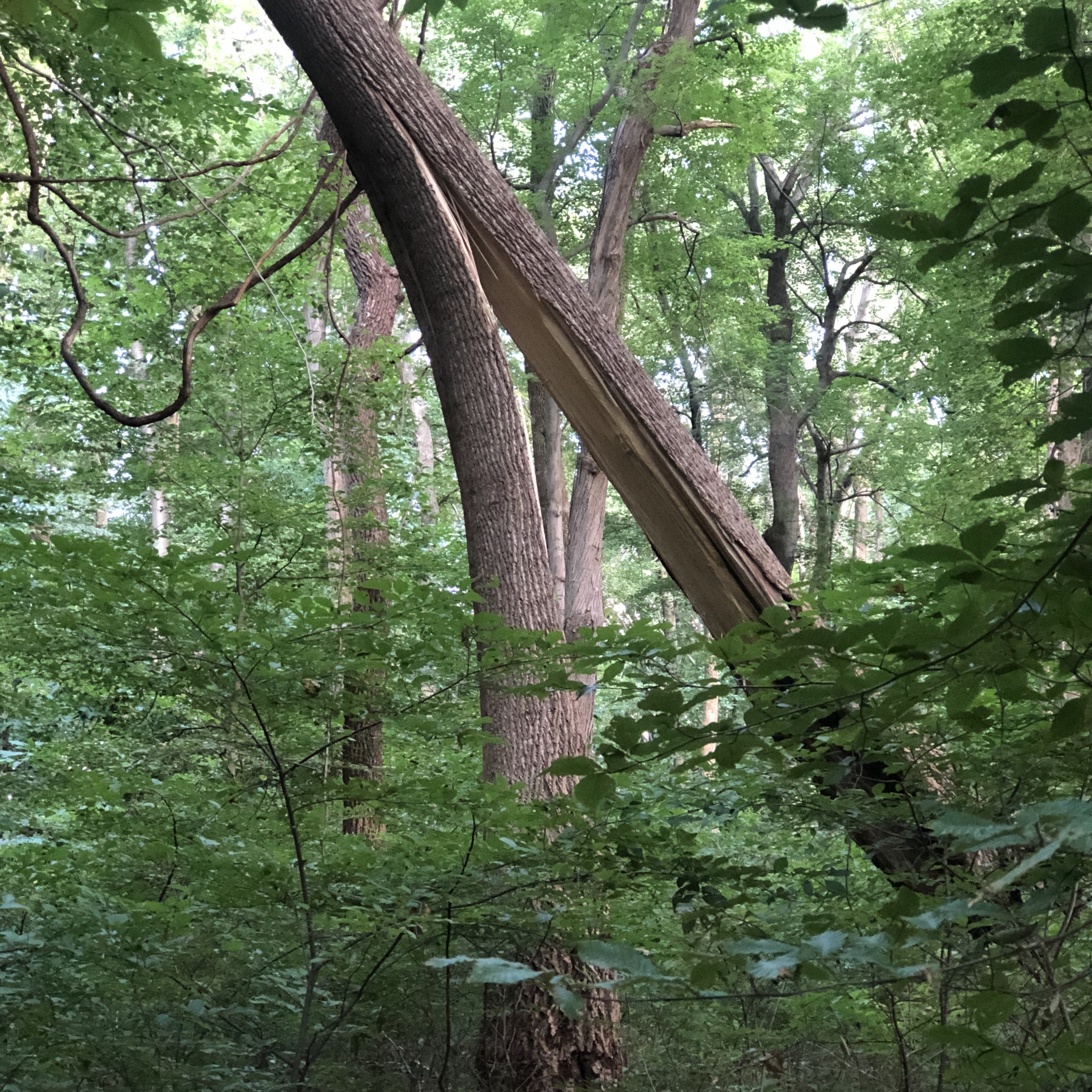Storm damage always provides some interesting photos. This photo is an amazing example of the strength and flexibility of wood and the typical "widow maker". There is a considerable amount of tension and torc on the remainder of the tree, and it creates quite a dangerous situation. Many other types of trees would crack in this situation. From years of field experience, common sense, and usage of wood, we know which woods are stronger and more durable than others. Of course, there is a scientific measurement, and it is the Janka Hardness Scale.
Evergreen forest

Pines and evergreens are known as soft woods. Wood from these trees grows quickly, as a result it burns faster, dents easier, and decays faster.
Hardwood forest

Deciduous trees or hardwoods grow slower and are denser woods. As a result, they burn slower, decay slower, and are more durable.
Janka Hardness Scale
The Janka Scale or Janka Hardness Scale measures the relative hardness of wood. An Austrian Wood Researcher named Gabriel Janka invented the scale in 1906. It indicates the hardness and durability of a sample of wood as well as how hard it is to mill, saw, and nail.
Actual Test
In practice, the test is the amount of force needed to embed a .444” steel ball halfway into the wood sample. Numerical values of force are from 0 to 4000 and units vary by continent. In the US it is lbf pounds/force, in Sweden it is kgf kilograms/force, and in Australia Newton or kilo Newton N/kN.
Wood Hardness Values

Janka Wood Strength Values

Criteria for Wood Sample
~ Sample wood is always heartwood from the trunk.
~ Pieces must be at least 2” x 2” x 6”, 12% moisture content, and no knots.
~ Tests follow protocols from the American Society for Testing and Materials (ASTM).
~ ASTM D143-14 (Standard Test Method for Small Clear Specimens of Timber) is typically for rating the hardness and dent resistance for flooring materials.
~ There are numerous ASTM tests for wood products. ASTM D2555 is for establishing clear wood strength values.
Take away:
Types of wood vary in strength and density. Hardness of wood is always a factor when determining the safety of live and dying trees. We use many factors to support our knowledge of wood hardness and density.
